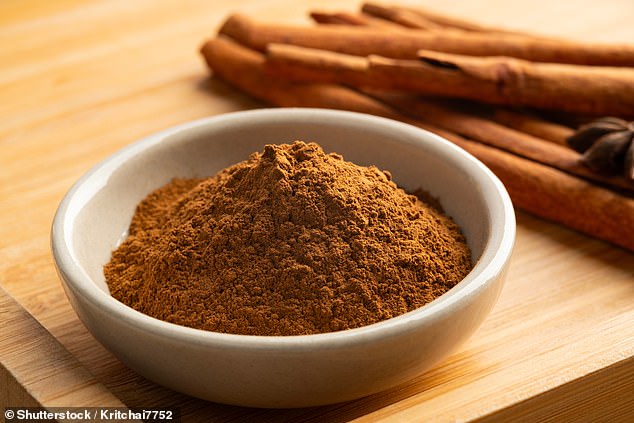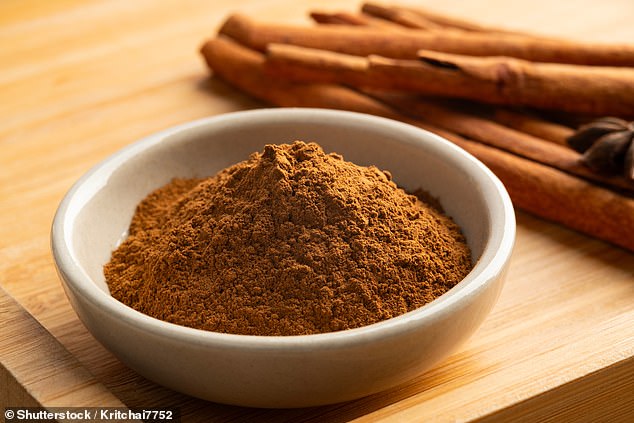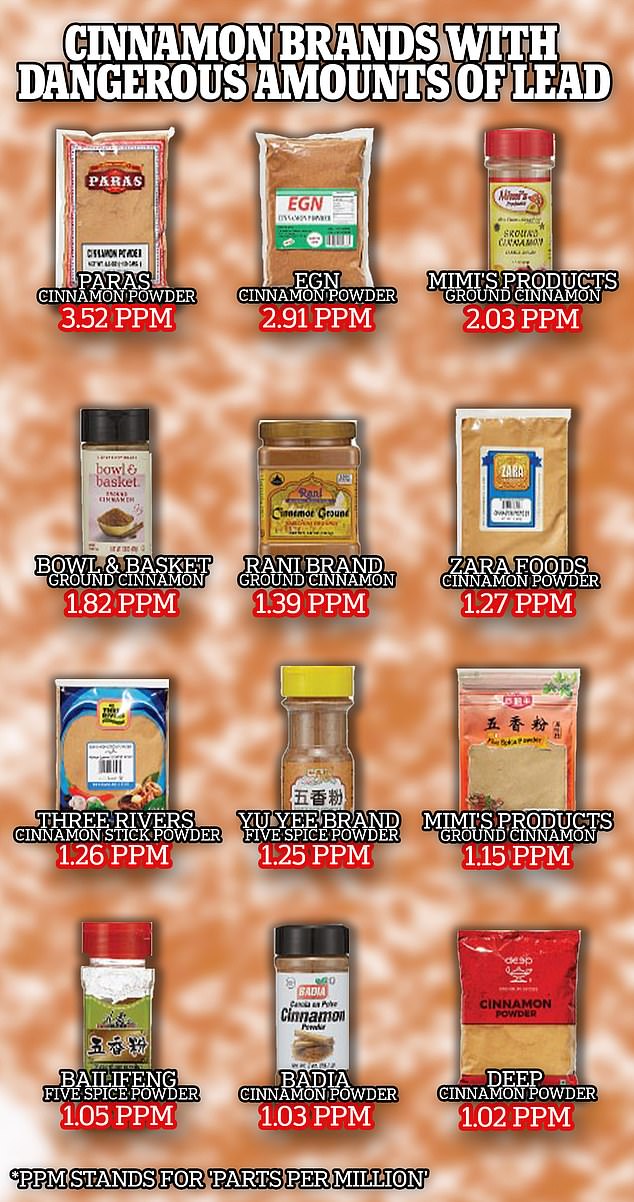Dangerous levels of carcinogenic lead have been found in a dozen commonly used culinary herbs – and just one TEASPOON is enough to cause harm



Research has shown that about ten brands of cinnamon contain dangerous levels of carcinogenic metals.
Scientists from the watchdog Consumer Reports tested 36 ground cinnamon products for lead, a toxic metal that has been shown in high doses to cause developmental problems in children, reproductive problems and cancer.
The team found that 12 of the brands tested contained more than one part per million (PPM) of lead, enough to warrant a recall in New York, the only state that regulates heavy metals in spices.
The researchers warned that just a quarter teaspoon of these products could pose serious health risks, especially in young children, as lead can harm brain development.

Several brands of cinnamon have been recalled due to the presence of lead, a toxic metal

Dr. James Rogers, director of food safety research and testing at Consumer Reports, said, “If you have one of these products, we think you should throw it away.”
‘Even small amounts of lead pose a risk because it can build up in the body over time and remain there for years, causing serious health damage.’
This year, several products involved in the tests have already been recalled because they contain traces of lead. The two biggest offenders have indicated that they will remove the products in question from the shelves.
No link has been established to any illnesses, but the cinnamon bags for children have made more than 500 children sick in the past year.
It’s not exactly clear why so many cinnamon products contain lead, although there are several theories.
Lead is naturally occurring in the earth’s crust, meaning it could be present in the soil in which herbs are grown. Additionally, the FDA previously said it was investigating whether lead was intentionally added for financial gain.
For example, research shows that substances such as red brick, red lead salt, lead oxide and lead chromate, which reflect the red color of cinnamon, were added to increase the value of the spice.
Karen Everstine, chief technical officer of the food supply chain watchdog FoodchainID, said it’s essentially a money-making scheme. “The idea is not to make people sick. Nobody wants to do that because they’ll get caught,” she said. “What they want to do is make money.”
Consumer Reports researchers purchased 36 products containing ground cinnamon at 17 stores in New York, New Jersey and Connecticut, as well as from online marketplaces.
Products from international specialty stores appeared to contain the highest levels, with Paras Cinnamon Powder topping the list at 3.5 PPM, three and a half times higher than New York’s recall limit.
Cinnamon from EGN and Mimi’s Products followed closely with 2.9 PPM and 2 PPM respectively.
Only one common brand appears on Consumer Reports’ list of most dangerous substances: powder from Florida-based company Badia Spices contains 1.03 PPM, just above the limit set in New York.
Consumer Reports also ranked several recognizable brands as “safe to use” in limited quantities.
For example, Amazon’s Happy Belly, Costco’s Kirkland Signature and Walmart’s Great Value each contain 0.8 PPM. Experts recommend consuming no more than a quarter teaspoon per day.
Whole Foods’ 365 Organic Cinnamon had the lowest lead levels at 0.02 PPM, with experts suggesting a daily limit of 16 teaspoons per day. The store’s non-organic version has 0.1 PPM, and the team advises sticking to two teaspoons.
Powders from Sadaf and Morton & Bassett San Francisco followed closely behind 365 Whole Foods Organic, both containing 0.04 PPM. The researchers recommend consuming no more than six to seven teaspoons per day.
“These products prove that it is possible to produce cinnamon without lead or with extremely low lead levels,” said Dr. Rogers.
While some brands pose a greater risk than others, the FDA and CDC warn that there is no safe level of lead consumption.
When lead is ingested, it can travel through the blood throughout the body and settle in soft tissues such as the kidneys, liver and lungs, where it damages those organs.
At higher doses or with frequent exposure, it has been linked to behavioral problems, growth problems, and learning difficulties in children.
Furthermore, the International Agency for Research on Cancer (IARC) has classified it as probably carcinogenic. This means that exposure to high concentrations is likely to cause cancer. However, there is no conclusive evidence yet.
Short-term exposure to lead can lead to symptoms such as headaches, abdominal pain, vomiting and anemia.




